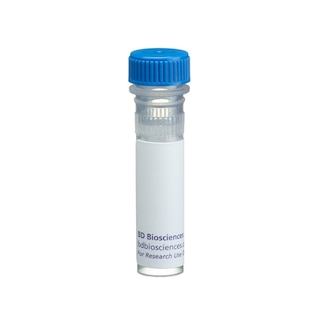-
Reagents
- Flow Cytometry Reagents
-
Western Blotting and Molecular Reagents
- Immunoassay Reagents
-
Single-Cell Multiomics Reagents
- BD® OMICS-Guard Sample Preservation Buffer
- BD® AbSeq Assay
- BD® OMICS-One Immune Profiler Protein Panel
- BD® Single-Cell Multiplexing Kit
- BD Rhapsody™ ATAC-Seq Assays
- BD Rhapsody™ Whole Transcriptome Analysis (WTA) Amplification Kit
- BD Rhapsody™ TCR/BCR Next Multiomic Assays
- BD Rhapsody™ Targeted mRNA Kits
- BD Rhapsody™ Accessory Kits
-
Functional Assays
-
Microscopy and Imaging Reagents
-
Cell Preparation and Separation Reagents
-
- BD® OMICS-Guard Sample Preservation Buffer
- BD® AbSeq Assay
- BD® OMICS-One Immune Profiler Protein Panel
- BD® Single-Cell Multiplexing Kit
- BD Rhapsody™ ATAC-Seq Assays
- BD Rhapsody™ Whole Transcriptome Analysis (WTA) Amplification Kit
- BD Rhapsody™ TCR/BCR Next Multiomic Assays
- BD Rhapsody™ Targeted mRNA Kits
- BD Rhapsody™ Accessory Kits
- United States (English)
-
Change country/language
Old Browser
This page has been recently translated and is available in French now.
Looks like you're visiting us from {countryName}.
Would you like to stay on the current country site or be switched to your country?
![Purified Mouse Anti-p150 [Glued]](/content/dam/bdb/products/global/reagents/microscopy-imaging-reagents/immunofluorescence-reagents/612xxx/6127xx/612708_base/612708Image1.png)
![Purified Mouse Anti-p150 [Glued]](/content/dam/bdb/products/global/reagents/microscopy-imaging-reagents/immunofluorescence-reagents/612xxx/6127xx/612708_base/612708Image1.png)

![Purified Mouse Anti-p150 [Glued]](/content/dam/bdb/products/global/reagents/microscopy-imaging-reagents/immunofluorescence-reagents/612xxx/6127xx/612708_base/612708Image1.png)
Western blot analysis of p150 [Glued] on a rat cerebrum lysate (left). Lane 1: 1:1000, lane 2: 1:2000, lane 3: 1:4000 dilution of the mouse anti- p150 [Glued] antibody. Immunofluorescent staining of SK-N-SH cells (Human neuroblastoma; ATCC HTB-11) (right). Cells were seeded in collagen coated 384-well imaging microplates (Material # 353962) at ~ 8,000 cells per well. After overnight incubation, cells were stained using the Triton-X 100 fix/perm protocol (see Recommended Assay Procedure) with the mouse anti- p150 [Glued] antibody and counter-stained with Hoechst 33342 (pseudo-colored blue). The second step reagent used was Alexa Fluor® 488 goat anti-mouse Ig (pseudo-colored green) (Invitrogen). The images were captured on a BD Pathway™ 855 or 435 Bioimager system using a 20x objective and merged using BD Attovision™ software. This antibody also stained SH-SY5Y (Human neuroblastoma; ATCC CRL-2266) and C6 (Rat glioma; ATCC CCL-107) cells using both the Triton-X 100 and methanol fix/perm protocols (see Recommended Assay Procedure).

![Purified Mouse Anti-p150 [Glued]](/content/dam/bdb/products/global/reagents/microscopy-imaging-reagents/immunofluorescence-reagents/612xxx/6127xx/612708_base/612708Image1.png)
BD Transduction Laboratories™ Purified Mouse Anti-p150 [Glued]

Regulatory Status Legend
Any use of products other than the permitted use without the express written authorization of Becton, Dickinson and Company is strictly prohibited.
Preparation And Storage
Recommended Assay Procedures
Western blot: Please refer to http://www.bdbiosciences.com/pharmingen/protocols/Western_Blotting.shtml
Bioimaging: Please refer to http://www.bdbiosciences.com/pharmingen/protocols/Bioimaging_Certified.shtml
Methanol Procedure for a 96 well plate:
Remove media from wells. Add 100 µl/well fresh 3.7% Formaldehyde in PBS. Incubate for 10 minutes at room temperature (RT). Flick out and add 100 µl/well 90% methanol. Incubate for 5 minutes at RT. Flick out and wash twice with PBS. Flick out PBS and add 100 µl/well blocking buffer (3% FBS in PBS). Incubate for 30 minutes at RT. Flick out and add diluted antibody (diluted in blocking buffer). Incubate for 1 hour at RT. Wash three times with PBS. Flick out PBS and add second step reagent. Incubate for 1 hour at RT. Wash three times with PBS. Image sample.
Triton-X 100 Procedure for a 96 well plate:
Remove media from wells. Add 100 µl/well fresh 3.7% Formaldehyde in PBS. Incubate for 10 minutes at room temperature (RT). Flick out and add 100 µl/well 0.1% Triton-X 100. Incubate for 5 minutes at RT. Flick out and wash twice with PBS. Flick out PBS and add 100 µl/well blocking buffer (3% FBS in PBS). Incubate for 30 minutes at RT. Flick out and add diluted antibody (diluted in blocking buffer). Incubate for 1 hour at RT. Flick out and wash three times with PBS. Flick out and add second step reagent. Incubate for 1 hour at RT. Flick out and wash three times with PBS. Image sample.
Product Notices
- Since applications vary, each investigator should titrate the reagent to obtain optimal results.
- Please refer to www.bdbiosciences.com/us/s/resources for technical protocols.
- Caution: Sodium azide yields highly toxic hydrazoic acid under acidic conditions. Dilute azide compounds in running water before discarding to avoid accumulation of potentially explosive deposits in plumbing.
- Source of all serum proteins is from USDA inspected abattoirs located in the United States.
p150 [Glued] was identified as a polypeptide associated with cytoplasmic dynein,the minus-end-directed microtubule-based motor protein. p150 [Glued] is also a member of the oligomeric dynactin complex. Dynactin mediates dynein-driven vesicle motility, as well as lower eukaryote nuclear transport. p150 [Glued] bears significant homology to the product of the Glued gene in Drosophila. It has been shown in vitro to be a required activator of dynein-mediated transport along microtubules. The p150 [Glued] component of the dynactin complex binds to microtubules and the actin-like protein Centractin (Arp-1), another member of the dynactin complex. In the developing rat, p150 [Glued] is expressed at high levels in neural tissue. Microtubule binding assays with selected constructs of p150 [Glued] indicate that amino acids 39-150 are required for microtubule association.
Development References (2)
-
Holzbaur EL, Hammarback JA, Paschal BM, Kravit NG, Pfister KK, Vallee RB. Homology of a 150K cytoplasmic dynein-associated polypeptide with the Drosophila gene Glued. 1991; 351(6327):579-583. (Biology). View Reference
-
Waterman-Storer CM, Karki S, Holzbaur EL. The p150Glued component of the dynactin complex binds to both microtubules and the actin-related protein centractin (Arp-1). 1995; 92(5):1634-1638. (Biology). View Reference
Please refer to Support Documents for Quality Certificates
Global - Refer to manufacturer's instructions for use and related User Manuals and Technical data sheets before using this products as described
Comparisons, where applicable, are made against older BD Technology, manual methods or are general performance claims. Comparisons are not made against non-BD technologies, unless otherwise noted.
For Research Use Only. Not for use in diagnostic or therapeutic procedures.
